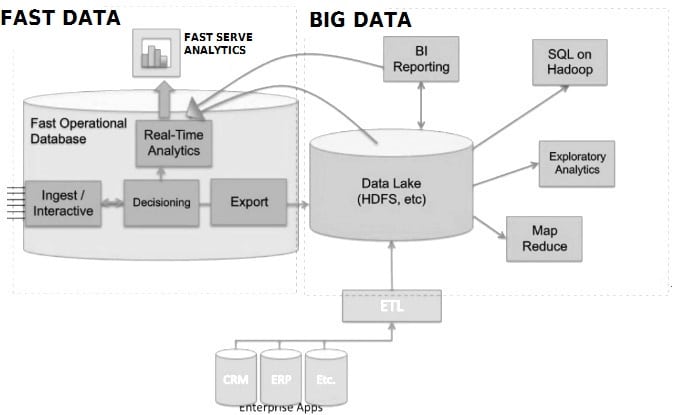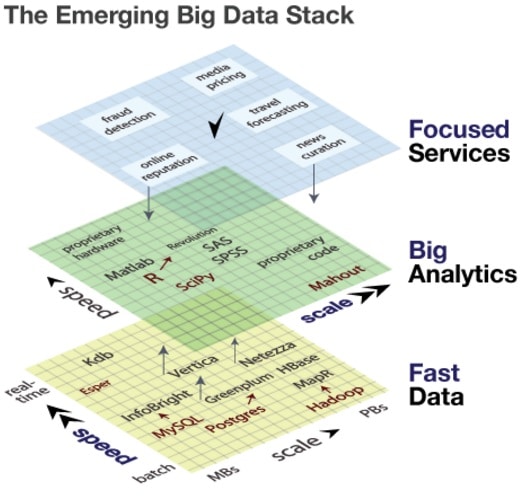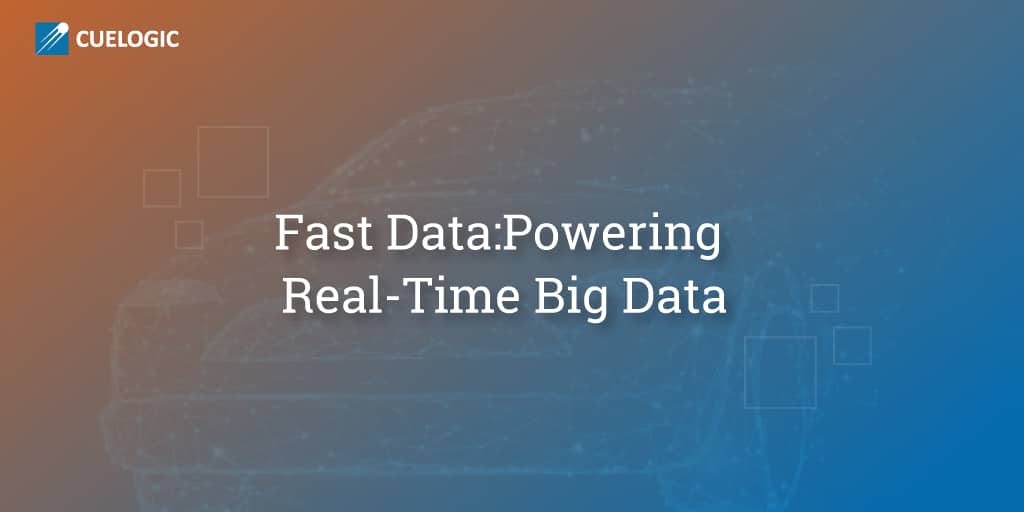“Businesses and their users are facing what one might call a perfect storm – decision-makers need insight faster than ever, and yet IT is struggling to avoid becoming a bottleneck.” – Jason Stamper, Analyst, 451 Research.
Fast Data is not a new concept. It has been around before Big Data and IoT came into the picture. Data partitioning, data warehousing and scaling servers were the steps taken to speed up data retrieval prior to IoT and Big Data.
The writing on the wall: Big Data volume in no longer the main criteria for gathering quality data. Companies are now vying to build better new platforms to solve data warehousing tasks and in processing analytics. Organizations are now aware of the fact that Big Data brings value to the business.

- In the modern tech context, Fast Data is about information in real-time or the ability to obtain data insights while it is generated. That is why streaming data is so happening now. Data streams now occur at thousands of times per second, what is now called Fast Data.
- The truth is, many companies with big data still don’t know what is to be done with it. Most companies use Hadoop for their data storage. Fast Data origins can be linked to Big Data variety, velocity and volume concepts. Fast Data is not just about high frequency data intake. It is about data processing in real-time, arriving at quick action-based results and taking decisions based on these results. All this while dealing with complex analytics. Conclusively, Big Data can only be effective if organizations interpret Big Data findings in real-time:
Data Processing Timeliness Picture an online shopping company that wants to recommend its products to a customer. Recommendations are based on the customer’s latest purchases. Only, the shopping website can’t make these recommendations fast enough. How soon in real-time can the website collect data, summarize and then provide the shopping options – preferably in real-time? Unless they want to lose the customer. This is where Fast Data comes in, adding immediacy to the proceedings. Timeliness and accuracy are two prime Fast Data attributes. Fast Data includes sampled recommendations, sensors that pass on instant trend changes and choices. When it comes to pinpointing loopholes or instances of inefficiency, go for Fast Data. View this video to know more about the need for In Memory database technology in Fast Data. Data Analytics
More focused analytics is now possible, thanks to Fast Data. Analytics enables customization of services or products. It enables better decision-making, leading to better customer service and faster fraud detection, among other things.
The question you need to ask is, at what particular time do you go for analytics? The more you are able to analyze in real-time, the more easier it becomes to take action on the basis of analytic results. Learn about Fast with Apache Spark in this video.
Streaming Data Analytics Fast Data makes a critical difference in obtaining results within a limited time span. For example, why would you want information on a customer who has already left the store or website? Fast Data helps organizations make similar make-or-break decisions. Processing streaming data is a vital part of Fast Data. Making automated decisions based on streaming machine data is important for the process. You may call this streaming analytics. At the same time, human intervention in the automated decisions are necessary. That is why the automated dashboards and streaming data sources need to be interactive for that ever important human tweaking and final authorization. 

- The first level concerns focused services. It concerns applying key processes and functions to obtain significant value from streaming data. Fraud detection, travel forecasting and similar services can thus be availed faster.
- The second layer consists of real-time analytics based on the streaming data. The company’s business logic is then put to use to make real-time decisions.
- In the Fast Data layer, the data is then exported for analytics and long term storage to Hadoop and other data storage options.Speed, real-time and accuracy are key elements of the entire stack.
Streaming is however just a part of the Fast Data solutions. OLTP databases are the in thing for processing streaming data. You can thus have speed and scale using an in-memory database, designed to handle data streaming at great speed. One popular Fast Data database is VoltDB. Summary Fast Data is powering innovation, while using Big Data to obtain key insights and conclusions. Anything real-time, be it security, fraud surveillance, risk analytics, customer choices, etc – Fast Data helps deliver instant, accurate solutions. The Big Data and Fast Data challenge is finally about concurrency. Just how much amount of data can be taken up at a given amount of time? This is for companies to decide. Read more about technology in our blogs section. (Emerging Big Data Stack and Fast Data Architecture Images, Courtesy O’Reilly Media)
